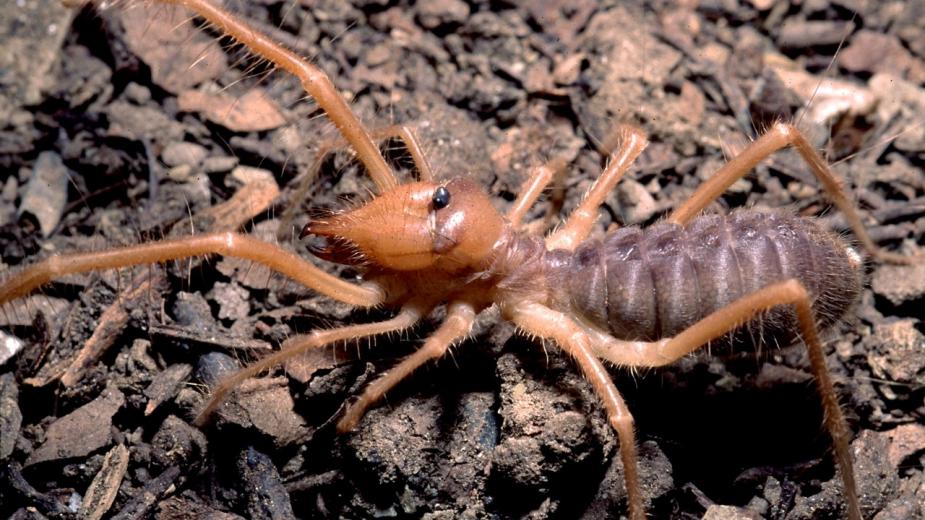Solifuges of the World has been designed to provide some taxonomic information on solifuges and a comprehensive list of the scientific literature.

What are Solifuges?
Solifuges are small to large arachnids with leg-like pedipalps, a pair of large two-segmented chelicerae, four pairs of legs, of which the first pair are lack terminal claws, and racket organs on the ventral surface of coxa IV.
They are considered to be most similar to pseudoscorpions (Pseudoscorpiones) and share several morphological features such as the enlarged patella on all legs.
Solifuges occur in most desert ecosystems regions of the world, with the exception of Australia.
Phylogeny
There have been no phylogenetic studies on solifuges.
Fossil Fauna
Fossilised solifuges have been recorded from Palaeozoic, Mesozoic and Tertiary deposits. The enigmatic Protosolpuga carbonaria from Mazon Creek, Illinois, is placed in its own family Protosolpugidae. The sole Mesozoic species, Cratosolpuga wunderlichi, was tentatively assigned to the Ceromidae. The named Tertiary fauna is derived from Dominican or Baltic Amber deposits.
This website contains published data up to the end of 2011.
Important references
- Harvey, M.S. (2003). Catalogue of the smaller arachnid orders of the world: Amblypygi, Uropygi, Schizomida, Palpigradi, Ricinulei and Solifugae. CSIRO Publishing: Melbourne.
- Roewer, C.F. (1932) Solifugae, Palpigradi. In: Bronn's Klassen und Ordnungen des Tierreichs. 5: Arthropoda. IV: Arachnoidea. Akademische Verlagsgesellschaft M.B.H., Leipzig, pp. 1-160.
- Roewer, C.F. (1933) Solifugae, Palpigradi. In: Bronn's Klassen und Ordnungen des Tierreichs. 5: Arthropoda. IV: Arachnoidea. Akademische Verlagsgesellschaft M.B.H., Leipzig, pp. 161-480.
- Roewer, C.F. (1934) Solifugae, Palpigradi. In: Bronn's Klassen und Ordnungen des Tierreichs. 5: Arthropoda. IV: Arachnoidea. Akademische Verlagsgesellschaft M.B.H., Leipzig, pp. 481-723.


